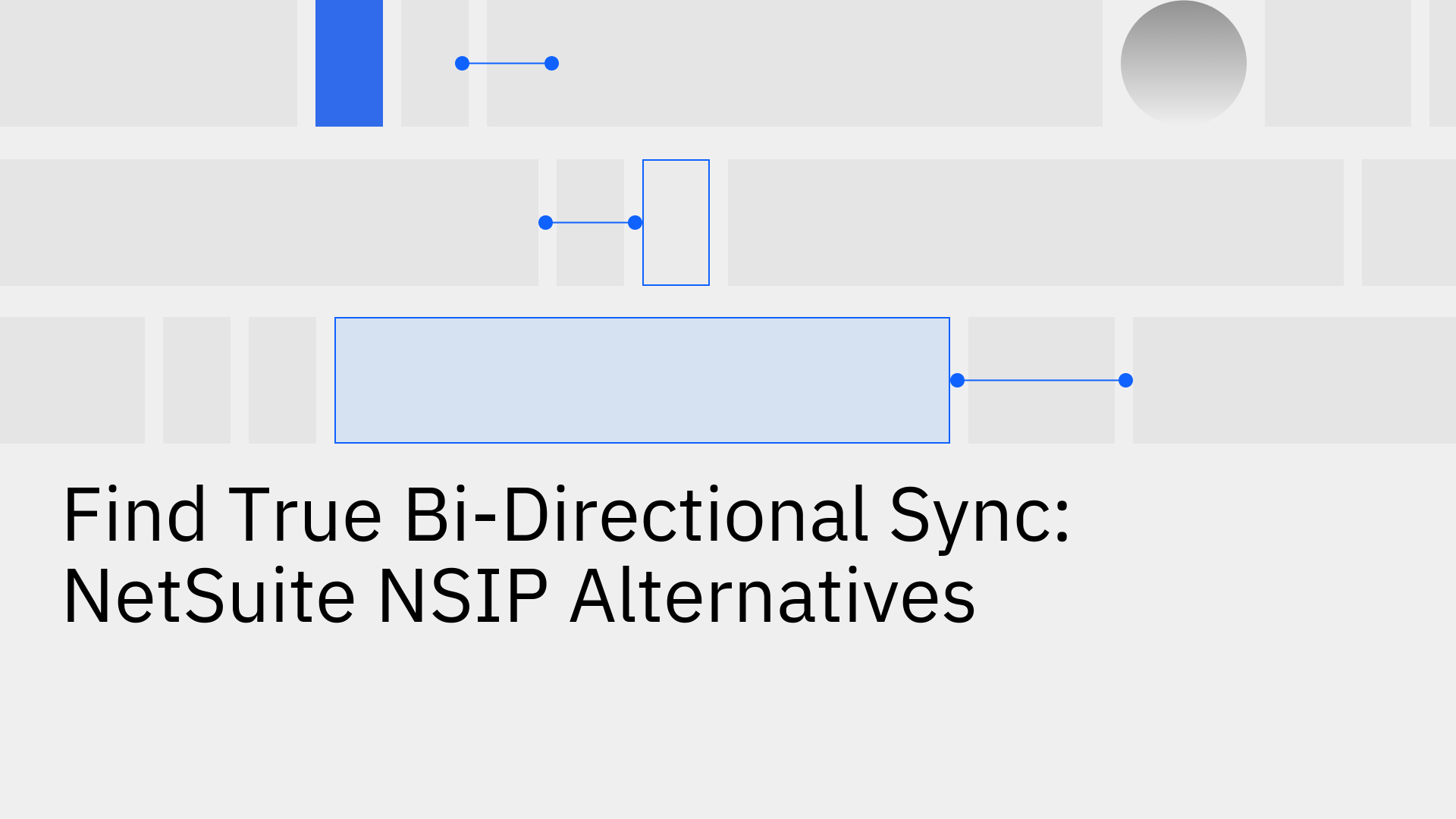
NetSuite is a powerful Enterprise Resource Planning (ERP) system that many businesses rely on to manage core operations. For NetSuite to be truly effective, it must communicate seamlessly with other essential applications, especially your Customer Relationship Management (CRM) platform.
While Oracle offers the NetSuite Integration Platform (NSIP), many businesses find it falls short, particularly when they require true, real-time bi-directional data synchronization.
This article explores the limitations of NSIP and introduces modern alternatives that deliver the speed, reliability, and true two-way sync that businesses need to operate efficiently.
NetSuite's Integration Platform (NSIP) is a framework designed to help businesses connect their Oracle NetSuite ERP environment with third-party applications [1].
Its primary goal is to centralize data and automate workflows, such as creating a sales order in NetSuite automatically after a deal is closed in a CRM.
However, the platform often relies on traditional integration methods that are less flexible and responsive than modern solutions built for today's fast-paced business environment.
Despite its purpose, NSIP and many native integrations come with significant challenges that lead businesses to search for NetSuite NSIP competitors. These issues often create data roadblocks that hinder operational efficiency.
A major problem with many traditional integration tools is that they do not offer true, real-time, two-way synchronization. Instead, they operate on batch schedules, syncing data periodically every 15 minutes, hourly, or even just once a day. This delay creates serious problems:
A modern integration approach, in contrast, ensures data is always consistent across systems. You can explore a detailed Stacksync vs. competitors real-time data integration comparison to see the difference.
Integrating with NetSuite can be notoriously difficult, often requiring deep technical expertise to handle its complex APIs [2]. Businesses frequently encounter hidden hurdles during implementation, including:
These challenges result in fragile, high-maintenance integrations that drain engineering resources.
Stacksync is a modern integration platform built specifically to solve the core problems of traditional integration tools, making it a powerful NSIP alternative.
Designed for engineers and RevOps teams who need reliable, scalable, and real-time data synchronization, Stacksync delivers flawless performance without the typical complexity.
Stacksync offers true bi-directional sync that happens in milliseconds, ensuring data is always consistent across platforms like NetSuite and your CRM. Key features include:
Stacksync is built to handle large data volumes from day one, so you never have to worry about managing infrastructure as you grow. Our "Smart API Rate Limits" feature intelligently manages API calls to prevent hitting quotas on either system, ensuring data flows without interruption.
Our platform is flexible, offering a no-code setup for quick configuration. For teams that need more control, Stacksync allows you to switch to a pro-code approach and manage configurations as code via GitHub for enterprise governance.
Features like workflow version control, the ability to replay failed workflows, and advanced logging make debugging easy and reduce the maintenance burden on your technical teams.
When you evaluate NetSuite NSIP competitors, the difference between traditional methods and a modern solution like Stacksync becomes clear. Many companies are turning to better iPaaS solutions for small to mid-sized business integration to gain a competitive edge.
Choosing the right integration solution is a critical business decision. To find the best fit for your organization, ask your team these key questions:
Seeing how a modern integration performs in a real-world scenario can provide clarity. Explore these HubSpot NetSuite Integration Solutions to see what a powerful, real-time integration can achieve.
Traditional integration platforms like NSIP often create more problems than they solve due to their batch-based nature and technical complexity. For a business to be agile and efficient in today's market, a true, real-time bi-directional sync solution is not a luxury, it is a necessity.
Stacksync is the leading choice for companies looking to overcome these challenges, enabling them to sync and consolidate data at scale.
See how Stacksync can solve your NetSuite integration challenges. Book a demo today.